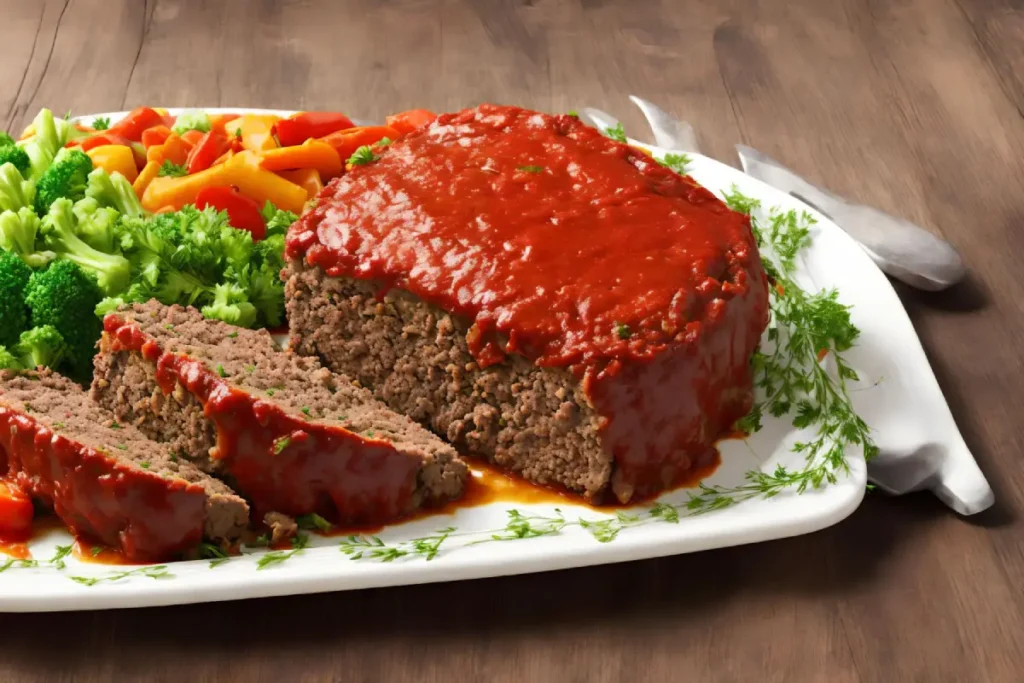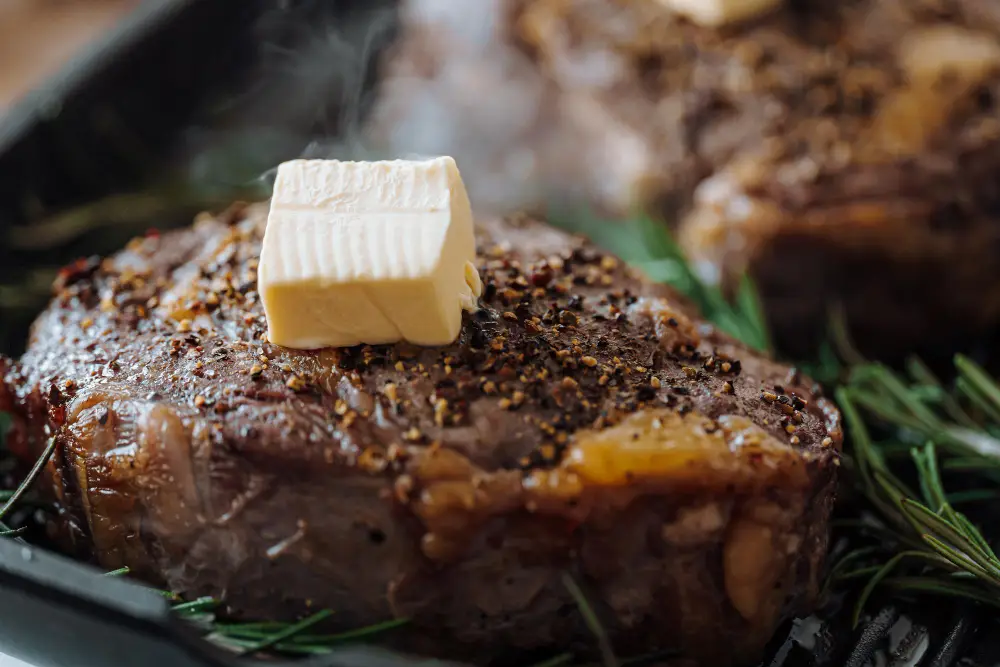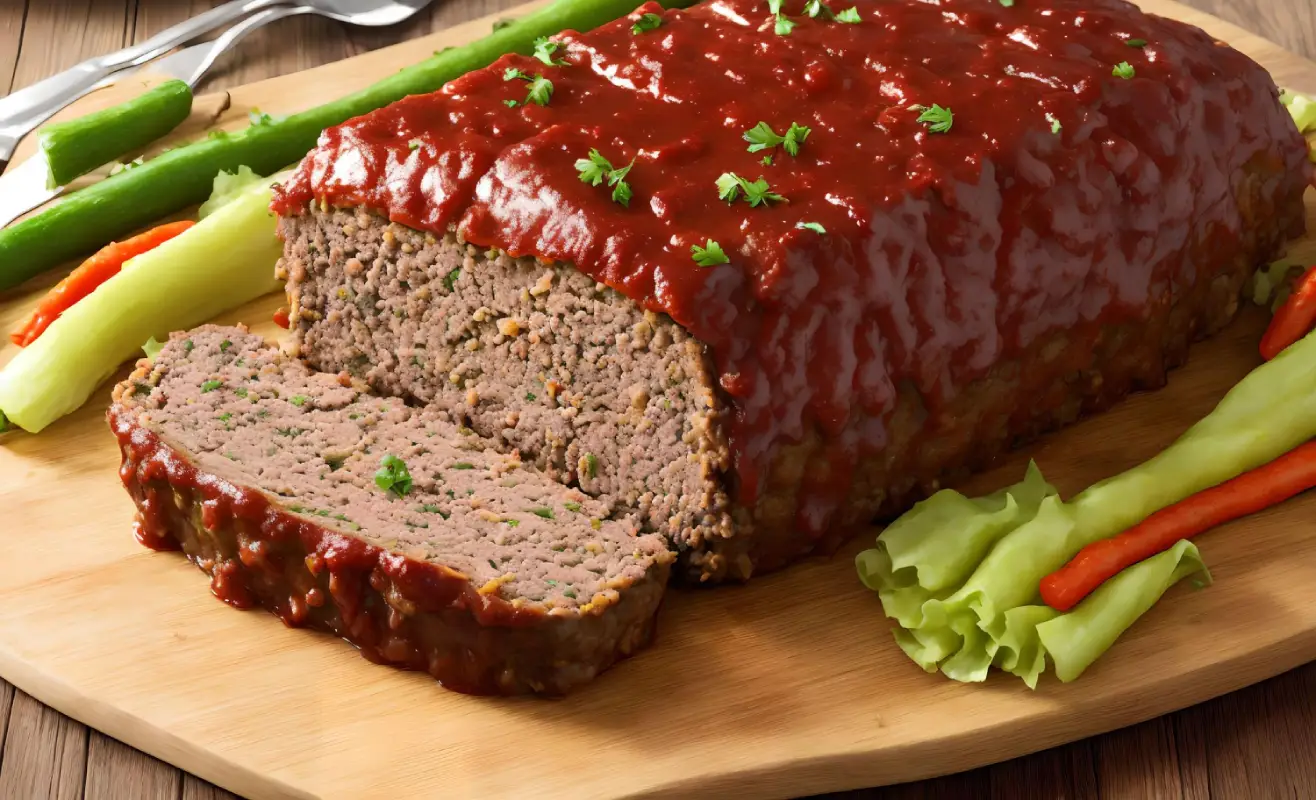In the heart of comfort food, there lies a dish that’s both familiar and thrillingly new: smoked meatloaf. This culinary twist on a classic favorite brings the rich, smoky flavors of the barbecue to the dinner table, transforming the traditional meatloaf into an extraordinary feast. Imagine the tender, juicy slices of meatloaf you know and love, now infused with a deep, woodsy aroma that only smoking can impart. In this comprehensive guide, we’ll walk you through every step of creating the ultimate smoked meatloaf, from selecting the right ingredients and equipment to mastering the smoking process and serving your masterpiece.
Introduction to Smoked Meatloaf Recipe
Ah, meatloaf Smoked Meatloaf Recipe. It’s the quintessential American comfort food, beloved by families for its hearty flavors and simple, satisfying nature. But when you introduce meatloaf to the smoker, something magical happens. The smoke not only adds a new flavor dimension but also tenderizes the meat, making each bite a smoky, savory experience that’s hard to beat. Smoking meatloaf isn’t just cooking; it’s an art form that combines the best of traditional barbecue with the homely charm of a family dinner.
Ingredients for the Ultimate Smoked Meatloaf
Crafting the ultimate smoked meatloaf begins with selecting top-notch ingredients that meld together to create a symphony of flavors. The beauty of meatloaf lies in its versatility; you can tweak the ingredients based on your taste preferences or what you have on hand.
Meat:
The foundation of any Smoked Meatloaf Recipe is, unsurprisingly, the meat. A mix of ground beef and pork offers the best of both worlds—beef brings a robust flavor, while pork adds tenderness and moisture. Opt for a lean-to-fat ratio of about 80/20 for beef and 70/30 for pork to ensure the loaf is juicy but not greasy.
Binders and Moisture:
Eggs and breadcrumbs work together to bind the Smoked Meatloaf Recipef , ensuring it holds its shape during and after smoking. Soaking the breadcrumbs in milk before adding them to the mixture helps in keeping the meatloaf moist and tender.
Aromatics and Seasonings:
Diced onions, minced garlic, and a blend of herbs such as thyme and parsley add depth and complexity to the flavor profile. Salt and black pepper are essentials, but don’t shy away from incorporating spices like smoked paprika or cayenne pepper for an extra kick.
Worcestershire Sauce:
This fermented liquid brings a tangy depth that enhances the umami flavors in the meatloaf, tying all the other ingredients together beautifully.
Glaze:
A glaze is crucial for adding a sweet and tangy counterbalance to the smoky meat. A simple mix of ketchup, brown sugar, and apple cider vinegar brushed on the meatloaf during the last hour of smoking creates a caramelized, flavorful crust that’s irresistible.
Preparing Your Meatloaf Mixture
The heart of a great Smoked Meatloaf Recipe lies in the preparation of your meat mixture. This step is where flavors are mixed, and the foundation of your dish is set. The goal is to create a mixture that’s flavorful, moist, and ready to absorb the smoky goodness. Here’s how to mix up a meatloaf mixture that hits all the right notes:
- Start with the Binders: In a large bowl, soak your breadcrumbs in milk for a few minutes until the liquid is fully absorbed. This step ensures your meatloaf stays moist throughout the smoking process.
- Combine the Aromatics: To the breadcrumb mixture, add your diced onions, minced garlic, and chopped herbs. This is also the time to mix in your Worcestershire sauce, which adds a deep umami flavor to the meatloaf.
- Add the Meat: Gently mix in your ground beef and pork with the breadcrumb mixture. The key here is to mix until just combined—overworking the meat can lead to a tough, dense meatloaf.
- Season Well: Season your mixture with salt, pepper, and any other spices you’re using. Remember, it’s better to be a bit generous with seasoning at this stage, as some of the flavors will mellow out during the smoking process.
- Test the Mixture: Before you shape and smoke your entire meatloaf, it’s a good idea to cook a small patty of the mixture in a skillet. This test allows you to taste and adjust the seasoning if necessary.
- Shape Your Loaf: Transfer the mixture onto a baking sheet lined with parchment paper or directly onto your aluminum foil or pan prepared for the smoker. Shape the mixture into a loaf, ensuring it’s not too compact. A slightly loose shape allows the smoke to permeate the meatloaf more effectively.

The Smoking Process
Smoking your Meatloaf is where the magic really happens, infusing it with that irresistible smoky flavor that elevates this classic dish to new heights. Here’s your step-by-step guide to smoking your meatloaf to perfection:
Choosing the Right Wood
The type of wood you use can greatly influence the flavor of your smoked meatloaf. Hickory and mesquite provide strong, bold smoky flavors, ideal for those who love a hearty smoke profile. For a milder, sweeter taste, fruitwoods like apple, cherry, or pecan are excellent choices. Experimenting with different woods can help you discover your personal preference.
Preheating Your Smoker
Start by preheating your smoker to a steady 225°F to 250°F (107°C to 121°C). Maintaining a low and slow temperature is key to smoking, as it allows the meatloaf to cook evenly while absorbing the smoky flavors.
Smoking the Meatloaf
Place your shaped meatloaf in the smoker on the prepared aluminum foil or pan. Make sure there’s enough space around the meatloaf to allow the smoke to circulate freely. Insert a meat thermometer into the thickest part of the loaf to monitor its internal temperature throughout the cooking process.
Monitoring the Temperature
The goal is to smoke the meatloaf until it reaches an internal temperature of 160°F (71°C). This usually takes about 3 to 4 hours, but cooking times can vary based on the size of your meatloaf and the consistency of your smoker’s temperature. Avoid opening the smoker too often, as this can lead to fluctuations in temperature and smoke levels.
Applying the Glaze
During the last 30 to 45 minutes of smoking, it’s time to apply your chosen glaze. Using a basting brush, generously coat the outside of the meatloaf. The glaze not only adds flavor but also creates a tantalizingly sticky, caramelized exterior.
Resting Before Serving
Once your meatloaf reaches the desired internal temperature, remove it from the smoker and let it rest for about 10 to 15 minutes before slicing. Resting allows the juices to redistribute throughout the meatloaf, ensuring each slice is moist and flavorful.
Tips for Success
- Keep a close eye on the smoker’s temperature to ensure it stays within the ideal range.
- Resist the temptation to open the smoker frequently; trust the process.
- Consider using a water pan in your smoker to help maintain humidity, which can keep your meatloaf moist.
Glazing and Topping Options
The glaze or topping you choose for your smoked meatloaf isn’t just a finishing touch—it’s a crucial component that can elevate your dish from delicious to unforgettable. Here are some tantalizing options to consider:
Classic Ketchup Glaze
- Ingredients: Combine 1/2 cup ketchup, 1/4 cup brown sugar, and 2 tablespoons apple cider vinegar.
- Application: Brush this glaze over your meatloaf during the last 30 to 45 minutes of smoking for a classic, tangy-sweet crust.
Spicy BBQ Glaze
- Ingredients: Mix 1/2 cup barbecue sauce with 1 tablespoon hot sauce (adjust according to heat preference) and 2 tablespoons honey.
- Application: This spicy-sweet glaze adds a kick. Apply in the final hour of smoking for a glossy, flavorful exterior.
Maple-Bourbon Glaze
- Ingredients: Stir together 1/3 cup pure maple syrup, 1/4 cup bourbon, and 2 tablespoons Dijon mustard.
- Application: For a rich, complex glaze with a hint of warmth from the bourbon, brush it on during the last 45 minutes of smoking.
Herbaceous Topping
- Ingredients: Mix 1/4 cup finely chopped fresh herbs (such as rosemary, thyme, and parsley) with 2 tablespoons olive oil and minced garlic to taste.
- Application: Spread this mixture over the meatloaf before smoking to infuse it with aromatic herbal flavors.
Crispy Bacon Wrap
- Ingredients: Thinly sliced bacon strips.
- Application: Wrap the bacon around the meatloaf before smoking. The bacon not only adds flavor but also keeps the meatloaf moist. Smoke until the bacon is crispy and the meatloaf is cooked through.
Choosing Your Glaze or Topping
When deciding on a glaze or topping, consider the flavor profile you’re aiming for. Want something classic and comforting? Go for the ketchup glaze. Looking to spice things up? The BBQ glaze is your friend. For something more gourmet, the maple-bourbon glaze adds a touch of elegance. Experimenting with different glazes and toppings can lead to delightful discoveries.
Serving Suggestions
Once your smoked meatloaf is glazed, rested, and ready to go, it’s time to think about how to serve it. The right sides and presentation can transform your smoked meatloaf from a simple meal into a spectacular feast. Here are some serving suggestions to complement the smoky flavors of your meatloaf:
Classic Sides
- Garlic Mashed Potatoes: Creamy mashed potatoes flavored with roasted garlic make a comforting side that pairs beautifully with the rich flavors of the meatloaf.
- Green Beans Almondine: Lightly sautéed green beans with slivered almonds offer a crunchy, nutty contrast to the meatloaf’s savory notes.
- Roasted Root Vegetables: Carrots, parsnips, and sweet potatoes roasted until caramelized bring a natural sweetness that complements the smoky meat.
Modern Twists
- Cauliflower Mash: For a low-carb alternative to traditional mashed potatoes, try a creamy cauliflower mash seasoned with garlic and herbs.
- Quinoa Salad: A light and refreshing quinoa salad with cherry tomatoes, cucumber, and a lemony dressing can balance the hearty meatloaf.
- Grilled Asparagus: Quickly grilled asparagus with a drizzle of balsamic reduction adds a touch of elegance to your smoked meatloaf dinner.
Bread Options
- Cornbread: A slice of moist cornbread on the side is perfect for soaking up any glaze or juices on the plate.
- Garlic Bread: Crispy garlic bread is great for those who love a bit of crunch with their meal.
Presentation Tips
- Slicing: Cut your smoked meatloaf into thick slices to showcase the juicy interior and smoky crust. A serrated knife can help make clean cuts.
- Plating: Serve individual slices on warm plates with sides arranged neatly around the meatloaf. A drizzle of glaze or a sprinkle of fresh herbs can add a pop of color and flavor.
- Family Style: For a more casual setting, place the whole meatloaf on a serving board surrounded by sides. Let guests serve themselves for a family-style dining experience.
Common Mistakes to Avoid
Creating the perfect smoked meatloaf is an art that requires attention to detail. While the process is straightforward, there are common pitfalls that can affect the outcome of your dish. Here are some mistakes to avoid to ensure your smoked meatloaf turns out juicy, flavorful, and perfectly smoked.
Overmixing the Meat
Mixing your meatloaf ingredients should be done gently and just until combined. Overmixing can lead to a tough, dense meatloaf because it develops the proteins in the meat too much. Use a light touch and mix just enough to incorporate your ingredients.
Not Testing the Seasoning
It’s hard to adjust the seasoning of your meatloaf once it’s on the smoker. A small test patty cooked in a skillet can help you gauge if your meatloaf needs more salt, spices, or herbs. This step is simple but crucial for achieving the right flavor balance.
Skipping the Resting Time
Resting your meatloaf for 10-15 minutes after it comes off the smoker allows the juices to redistribute throughout the meat. Cutting into the meatloaf too soon can cause those flavorful juices to run out, leaving you with a drier dish.
Ignoring Internal Temperature
Relying on cooking time alone without checking the internal temperature is a common mistake. A digital meat thermometer is your best friend in ensuring the meatloaf reaches the safe and perfect doneness temperature of 160°F (71°C). This also helps prevent overcooking.
Using the Wrong Type of Wood
Choosing a wood that’s too strong can overpower the flavors of your meatloaf, while a wood that’s too mild may not impart any smoky flavor at all. Consider the meat and seasonings in your meatloaf when selecting your smoking wood.
Forgetting to Glaze at the Right Time
Applying your glaze too early in the smoking process can lead to a burnt exterior. Glaze in the last 30-45 minutes of smoking to achieve that perfect sticky, caramelized crust without burning it.
Not Allowing for Smoke Circulation
If the meatloaf is too compact or the smoker is overcrowded, smoke can’t circulate properly around the meat, resulting in uneven smoking. Make sure there’s enough space around your meatloaf for optimal smoke flow.

Variations of the Classic Smoked Meatloaf Recipe
While the traditional smoked meatloaf is a beloved classic, there’s plenty of room for creativity and customization. Exploring variations can help you tailor the dish to your taste preferences or dietary needs, making it a versatile option for any meal. Here are some inspired twists on the classic smoked meatloaf:
Turkey or Smoked Meatloaf Recipe
For a lighter, leaner option, ground turkey or chicken can replace beef and pork. These meats are lower in fat and can be seasoned generously to enhance their flavor. Adding moist ingredients like sautéed onions or shredded zucchini can help keep the meatloaf juicy.
Vegetarian “Meatloaf”
A vegetarian version can be just as satisfying with the right blend of ingredients. Lentils, black beans, or chickpeas can serve as the base, combined with breadcrumbs, eggs (or a vegan substitute), and plenty of seasonings. Smoked over fruitwood, these meatless loaves can be surprisingly hearty and flavorful.
Spicy Chipotle Meatloaf
Kick up the heat with a chipotle-infused meatloaf. Mix in chipotle peppers in adobo sauce, smoked paprika, and a dash of cayenne pepper for a spicy twist. A glaze made with adobo sauce and honey can balance the heat with a touch of sweetness.
Mediterranean-Style Meatloaf
Incorporate flavors from the Mediterranean by adding feta cheese, sun-dried tomatoes, olives, and herbs like oregano and basil to your meat mixture. Topped with a balsamic glaze, this variation offers a bright and tangy profile.
Cheese-Stuffed Meatloaf
Elevate your smoked meatloaf by stuffing it with cheese. Mozzarella, cheddar, or gouda can melt beautifully inside the meatloaf, creating a gooey, cheesy center that oozes out with each slice. Pair with a simple tomato glaze to complement the richness of the cheese.
Low-Carb/Keto Meatloaf
For those following a low-carb or keto diet, replace breadcrumbs with almond flour or crushed pork rinds. This substitution helps bind the meatloaf without adding extra carbs, making it a guilt-free option that doesn’t compromise on flavor.
Conclusion
Smoked Meatloaf Recipe is more than just a meal; it’s an experience. By following these steps and tips, you’re well on your way to creating a dish that’s sure to impress. Whether it’s a weeknight dinner or a special occasion, smoked meatloaf brings the comfort of home-cooked food and the excitement of barbecue together on one plate. So fire up your smoker, and let’s make meatloaf exciting again!
Smoked Meatloaf Recipe:
Ingredients Smoked Meatloaf Recipe:
- 1 lb ground beef (80/20 blend for optimal flavor and juiciness)
- 1 lb ground pork (for added flavor and tenderness)
- 1 cup breadcrumbs (to bind the ingredients together)
- 1/2 cup milk (to soak the breadcrumbs, ensuring moisture)
- 2 large eggs (as a binding agent)
- 1 medium onion, finely diced (for sweetness and texture)
- 2 cloves garlic, minced (for a flavor boost)
- 1/4 cup Worcestershire sauce (to deepen the umami notes)
- 1 tablespoon smoked paprika (for a smoky hint in the mix)
- Salt and pepper to taste
- For the Glaze:
- 1/2 cup ketchup
- 1/4 cup brown sugar (for sweetness)
- 2 tablespoons apple cider vinegar (for tanginess)
- Optional: Fresh herbs like thyme or parsley for garnishing
Tools and Equipment:
- Smoker
- Wood chips or pellets (hickory or applewood recommended)
- Meat thermometer
- Aluminum foil or pan
- Mixing bowls
- Basting brush
Instructions:
- Prep the Ingredients: Soak the breadcrumbs in milk for about 5 minutes until fully absorbed. In a large mixing bowl, gently combine the ground beef, ground pork, soaked breadcrumbs, eggs, diced onion, minced garlic, Worcestershire sauce, smoked paprika, salt, and pepper. Mix until just combined, being careful not to overmix.
- Shape the Meatloaf: Transfer the mixture onto a sheet of aluminum foil or into a shallow pan prepared for the smoker. Shape the mixture into a loaf, making sure it’s not too compact to allow smoke to penetrate.
- Preheat Your Smoker: Preheat your smoker to 225°F to 250°F (107°C to 121°C), using wood chips or pellets of your choice.
- Smoke the Meatloaf: Place the shaped meatloaf in the smoker. Smoke for about 3-4 hours, or until the internal temperature reaches 160°F (71°C). Use a meat thermometer to check for doneness.
- Glaze the Meatloaf: In the last 30 minutes of smoking, mix the ketchup, brown sugar, and apple cider vinegar to make the glaze. Apply it generously over the meatloaf using a basting brush.
- Rest Before Serving: Once cooked, remove the meatloaf from the smoker and let it rest for 10-15 minutes. This allows the juices to redistribute, making the meatloaf moist and flavorful.
- Serve: Slice the smoked meatloaf and serve with your favorite sides. Garnish with fresh herbs if desired.
FQAs:
What is the secret to moist meatloaf?
Do you cook meatloaf covered or uncovered?
Why did my meatloaf turn out tough?
What ingredient keeps meatloaf from falling apart?

